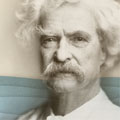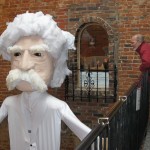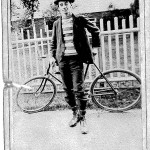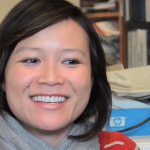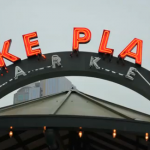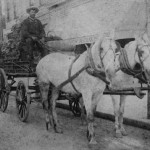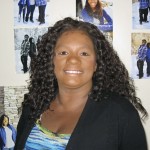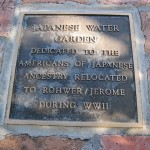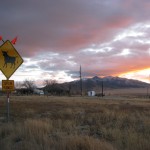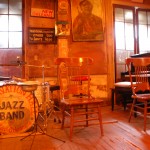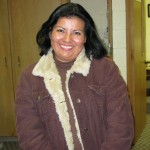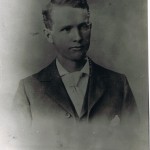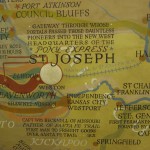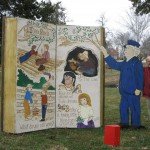
Dwania Kyles stands in front of a photo of herself on the first day of school. Kyles is one of the Memphis 13, a group of students who integrated the Memphis public schools.
A half-century has passed since Dwania Kyles, a wellness consultant in New York, made history as one of the Memphis 13, first-graders who desegregated the all-white public schools of Memphis.
She has returned to Memphis for the first showing of a documentary about the Memphis 13 by University of Memphis law professor Daniel Kiel. We are interviewing her in a Beale Street museum and gallery dedicated to the photography of Ernest Withers, who captured the tinderbox of tension that engulfed segregated Memphis in Kyles’s era, the 1950s and 1960s.
Withers photographed a 1950s bumper sticker: “Don’t buy gas where you can’t use the rest room.” In another of his photos, white protestors carry a sign at city hall in 1960: “Segregation or War.”
In that environment the NAACP searched before the 1961 school year for black families willing to subject their young children to the strain of being school-desegregation firsts. Most families declined. But Dwania’s parents, who had moved from Chicago two years earlier to be part of the civil rights movement, said yes.
Dwania’s father, Rev. Samuel “Billy” Kyles, could hardly say no. He chaired the NAACP’s education committee. Pastor of Monumental Baptist Church (a position he still holds), Kyles was on the Lorraine Motel balcony with Dr. Martin Luther King Jr. when he was assassinated on April 4, 1968.
Dwania Kyles, with two other black children, Michael Willis and Harry Williams, desegregated the first grade of Bruce Elementary School. Each of the Memphis 13 was the only black child in an otherwise all-white classroom.
The strain of the isolation and abuse—the Memphis 13 were repeatedly called nigger—took its toll. But Kyles said that they learned how to protect themselves psychologically “so we weren’t destroyed by it as a five year old and six year old. That was hard, very hard. I really lived in my head a lot.”
At least one student, possibly two, did not stay the year, Kyles says. Many of the Memphis 13 did not last through sixth grade.
Kyles recalls that she was the only one of the Memphis 13 to go straight through the city’s public schools, graduating from Bellevue Middle School and then Central High School. But she announced to her parents in her junior year that she, unlike her siblings, would be going to a black college or university. She attended Spelman College in Atlanta and graduated from Howard University in Washington, D.C.
She looks back on her Memphis school days almost with nostalgia. At a reunion last month of Memphis 13 survivors, “nobody was really bitter,” she says. They recognized they were part of a “life-changing experience, not just for us but for the whole city as well.”
The closest her daughter’s generation has been able to get to that kind of experience, she says, was Barack Obama’s campaign for the presidency: “He did reignite that fire that was viciously put out in the ‘60s with the assassination of so many forward-thinking leaders who were so young.” She expresses concern that her daughter’s generation will fall back, not move forward, not push for necessary change.
She defines that change—in a world of animal cloning, fracking and food processing—as a push for a sustainable planet and nutritional foods. “Will there be any real food to eat?” she asks.
In this video excerpt, Dan Tham’s captures portions of our interview with Kyles where she talks about change in her generation and in her daughter’s generation.
Loren Ghiglione
